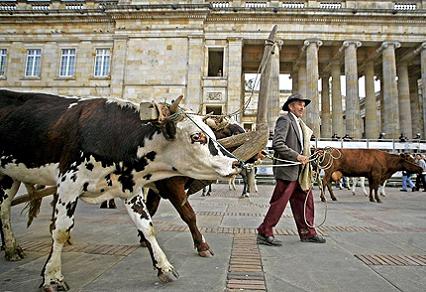
But despite its reputation, Bogota has emerged as one of South America’s safest, cleanest, and most interesting capital cities. Home to classical housing and a number of historic churches, the capital is the most popular destination in Colombia and one of the nation’s shining tourism stars. With a crime rate lower than Washington DC and a top-notch health system, it’s becoming a magnet for tourists.
How then, did one of the world’s most dangerous capitals turn itself around so rapidly? Walk along one of the city’s central streets and you’ll see the reason for the country’s sudden safety – economic growth in Colombia has almost completely eliminated its drug industry and the violent crime it has pushed to the front of the country’s international image.
That’s not to say that problems don’t remain in the capital, which has a population approaching that of Los Angeles or Chicago. Low-level drug use remains an issue throughout Colombia, with many impoverished citizens turning to drugs as an escape from poverty. The city’s dangers, however, are limited to small pockets of residential land, with most tourists avoiding risk entirely.
It appears that Bogota’s ‘dangerous’ reputation is another case of public identity versus a different reality. While the city’s reputation for dangers was for many years deserved, its current look is one that couldn’t be more welcoming for tourists. For a peaceful, inspiring, and interesting look at what was once the world’s drug capital, Bogota is certainly a worthy choice.
